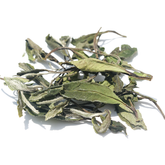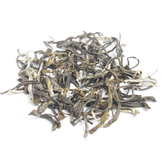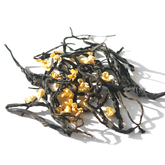What Is the Indian Legend Regarding the Discovery of Tea? | Origin, Myths & Facts
Imagine one of the world’s most popular beverages tracing its origin back to a monk’s extreme sacrifice in pursuit of enlightenment. This is not a fantasy tale, but the most well-known Indian legend about the discovery of tea, centered around Bodhidharma—one of the most influential figures in Buddhist history.
This article explores this mysterious and spiritual story, comparing it with historical and botanical evidence to reveal the true origins of tea and the rise of the Indian tea industry. You’ll see that although this legend is not factual, it profoundly shaped people’s perception of tea and the remarkable rise of India’s real tea heritage.
The Indian Legend Regarding the Discovery of Tea
This is a deeply spiritual tale that has been passed down for centuries across India and East Asia. According to the Indian legend of Bodhidharma, the discovery of tea is linked to a high Buddhist monk known for his dedication to meditation. Bodhidharma, believed to have lived during the 5th–6th centuries, traveled from India to China to spread the teachings of Zen (Chan) Buddhism.
He vowed to meditate facing a wall for nine years to achieve enlightenment. During the fifth year, exhaustion overwhelmed him, and he fell asleep. When he awoke, furious at his weakness, he tore off his own eyelids and threw them to the ground.
Miraculously, a plant sprouted from the spot where his eyelids had fallen. The leaves of this plant, when infused in hot water, had the power to banish drowsiness and promote alertness. His disciples used these leaves to make an invigorating brew that helped them stay awake during long meditation sessions. That plant, according to the legend, was the tea tree.
Legend Regarding vs. Reality
Although this Bodhidharma tea legend is widely told, early written records are relatively scarce. The version where “Daruma’s eyelids turned into tea leaves” is especially popular in Japan. Even European naturalists, such as Engelbert Kaempfer in the 17th century, recorded this story in their writings.
However, we must make it clear: This story answers what is the Indian legend regarding the discovery of tea, but it is a myth rather than a historical fact.
From an academic perspective, this story is considered a religious allegory created to explain and glorify the stimulating power of tea. Most historians agree that India did not begin cultivating or drinking tea until the 19th century, when British colonizers introduced tea plants and production techniques, especially after discovering wild tea trees in Assam.
The Chinese Version of the Tea Origin
In contrast, ancient Chinese legends attribute the discovery of tea to Shennong, the mythical emperor regarded as the father of agriculture and herbal medicine in Chinese civilization.
According to the ancient texts Shennong Ben Cao Jing and The Classic of Tea (茶经), around 2737 BCE, Shennong tasted hundreds of herbs to test which were edible and which had medicinal properties.
One day, he was poisoned by a toxic herb and fainted under a tree. When he awoke, he noticed a fragrant plant nearby, picked a few leaves, and chewed them. The refreshing juice of the leaves neutralized the poison in his body. Grateful for its healing power, Shennong named the plant “Cha” (meaning tea) and introduced it to his people.
The True Origin of Tea: Science and Evidence
When it comes to the true origin of tea, modern botany, molecular biology, and archaeology provide clear answers.
The southwestern region of Yunnan, China, is universally recognized as the cradle and domestication center of the tea plant (Camellia sinensis). This conclusion is supported by extensive research and accepted by the international academic community.
Global Scientific Consensus
After more than a century of debate, major authorities have reached agreement:
-
The International Tea Committee officially recognizes Yunnan, China, as the origin of the tea plant.
-
The FAO (Food and Agriculture Organization of the United Nations) supports the Yunnan-origin theory in its Global Tea Resources Report.
-
Articles published in Science and other major journals have confirmed this through genetic research.
Botanical Evidence
In the Lancang River basin of Yunnan, scientists have discovered thousands of ancient tea trees:
-
Qianjiazhai Wild Tea Tree (~2,700 years old)
-
Bada Wild Tea Tree (~1,700 years old)
-
Bangwei Transitional Ancient Tea Tree (~1,000 years old)
-
Nannuo Mountain Cultivated Ancient Tea Tree (~800 years old)
Genetic Evidence
Modern DNA sequencing shows that:
-
Yunnan tea populations hold the richest genetic diversity of all tea trees.
-
All other tea varieties trace back to Yunnan’s original gene pool.
-
The so-called Assamica variety is a genetic descendant of Yunnan’s tea population.
Historical and Archaeological Evidence
-
The earliest written reference to tea appears in Shennong Ben Cao Jing (Han Dynasty), stating: “Shennong tasted hundreds of herbs, was poisoned seventy-two times a day, and was cured by tea.”
-
Archaeological discovery: Tea remains excavated from Emperor Jing of Han’s tomb (2nd century BCE) have been identified as premium tea buds, proving tea was consumed by the royal family over 2,000 years ago.
-
Early cultivation evidence: Ancient transitional tea trees in Yunnan confirm human domestication over 1,000 years ago.
The Origin of Indian Assam Tea
Assam, located in northeastern India, is one of the world’s largest tea-growing regions. Its humid climate, heavy rainfall, and low altitude provide ideal conditions for tea cultivation. Today, Assam Tea stands alongside Chinese Pu-erh, Ceylon Tea, and Kenyan Black Tea as one of the four great tea regions of the world.
The discovery of Assam Tea dates back to the 1830s. In 1823, British explorer Robert Bruce observed local Singpho tribes brewing a beverage from wild tea leaves in Assam. He sent samples to the Calcutta Botanical Garden, where botanists David Scott and George Gordon identified the plant as a variety of tea, naming it Camellia sinensis var. assamica, distinct from the Chinese tea variety Camellia sinensis var. sinensis.
This marked a turning point in the history of tea — proving that tea trees also grew naturally in the India–China border region.
Modern genetic studies later confirmed that Assam tea plants are closely related to Yunnan large-leaf tea trees, meaning the Assam variety likely descended from China’s ancient wild tea populations.
A Brief History of the Indian Tea Industry
By the early 1800s, Britain was importing massive amounts of tea from China, causing trade imbalances. In the 1830s, the British East India Company sought to end its dependence on Chinese tea. Following Robert Bruce’s discovery, the British recognized Assam’s commercial potential and established the Assam Company in 1839 — the first formal tea enterprise in India.
Although the so-called “wild tea” in Assam (later proven to be of Chinese genetic origin) initially produced poor-quality tea, the British soon began smuggling tea seeds and techniques from China.
Between 1848 and 1851, Robert Fortune, a Scottish botanist, was secretly sent by the East India Company to China. He successfully transported large quantities of tea seeds, saplings, and full sets of Chinese tea-making equipment and know-how to India, particularly to the Darjeeling region.
By the late 19th century, Assam had become the world’s largest black tea producing region. The bold, malty, and amber-colored Assam black tea became the key ingredient in English Breakfast Tea, cementing India’s place in the global tea trade.
Comparing the Myths and the Facts
Both China and India are great tea-producing nations, each with its own origin story — one rooted in spiritual enlightenment, the other in ancient medicine and agriculture.
In China, Emperor Shennong tasted hundreds of herbs and discovered tea as a natural antidote.
In India, Bodhidharma’s act of cutting off his eyelids gave rise to a miraculous plant — the tea tree.
In reality, scientific evidence shows that the tea plant originated in southwestern China (Yunnan) and later spread across Asia. During the 19th century, the British established tea plantations in Assam, transforming tea from a local crop into a global commodity.
From myth to science, and from spirituality to industry, the story of tea—whether from Chinese legends or Indian history—remains one of humanity’s most fascinating journeys.
SEE MORE ABOUT TEA
If you are a beginner about Chinese tea:
Basic-Guide-to-Chinese-Tea
If you have questions about selecting tea:
Learn-more-about-chinese-tea
If you have questions about the benefits of tea:
Health-benefits-of-chinese-tea
If you have questions about brewing tea:
How-to-brew-loose-leaf-tea






